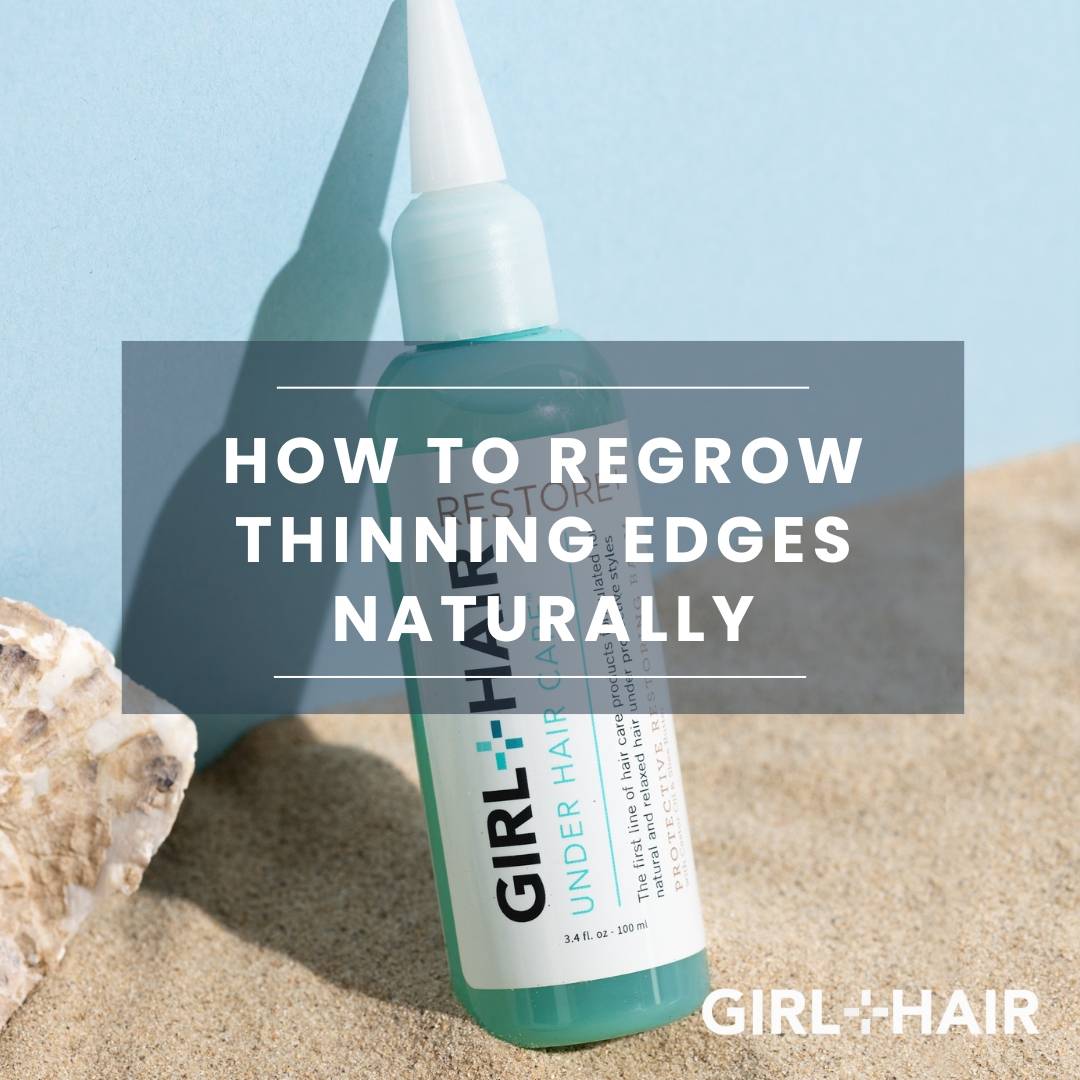
For many women, thinning edges aren't just a beauty concern - they're an emotional journey. Whether from years of tight braids, chemical processing, or unexplained hair loss, that receding hairline can feel like a loss of identity. At GIRL+HAIR, we've formulated our Castor Oil Hair Growth Balm specifically to address this vulnerable area with nature's most powerful follicle activators combined with modern dermatological science.
Understanding the Root Causes of Edge Thinning
Before treating thinning edges, we must understand why they occur. Traction alopecia - the technical term for hairstyle-related hair loss - develops gradually when repetitive pulling damages delicate frontal follicles. Chemical relaxers containing lye or no-lye formulations alter the hair's natural structure at the molecular level, while hormonal fluctuations (particularly during postpartum or menopause) can suddenly change your hair's growth patterns.
What makes our Castor Oil Hair Growth Balm different is its triple-action approach:

- Stimulation from Abyssinian, Tea tree, Pimento, and Neem essential oils increases blood circulation.

2. Nourishment through Jamaican black castor oil's unique ricinoleic acid profile penetrates deeper than standard castor oil.

3. Protection with a Olive oil barrier that shields fragile baby hairs from styling friction
The 30-Day Edge Restoration Protocol

Week 1: The Reset Phase
Begin by giving your edges a complete break from tension. If possible, avoid all braids, weaves, or tight ponytails during this period. Each evening, use the precision tip of your Castor Oil Hair Growth Balm to trace along your hairline, feeling the refreshing tingle of Tea Tree oil awakening dormant follicles. Follow with five minutes of gentle massage using your fingertips in upward circular motions - imagine coaxing those follicles back to life.

Weeks 2-3: The Awakening Phase
This is when you'll likely notice the first signs of revival - perhaps less shedding when brushing or tiny sprouts along your temples. Incorporate weekly exfoliation using our recommended Apple Cider Vinegar Rinse to remove dead skin cells that might be blocking new growth.

Week 4: The Transformation Phase
By now, your once-sparse areas should show visible improvement. Customer Jazmine R. reported, "After four weeks, my edges went from barely there to needing to be laid with gel again!" This is when you can gradually reintroduce protective styles, but with new wisdom - always ask your stylist to leave the front slightly looser, and never let braids stay in longer than six weeks.
Real Stories of Edge Restoration
Our clinical trial participants saw an average of 1/4 inch new growth after 30 days when combining the balm with the massage protocol. But more telling are the emotional testimonials:
"For the first time since having my twins, I feel like myself again" - Marissa T., 34
"My edges survived cosmetology school thanks to this routine" - Destiny P., 22
"At 58, I assumed my edges were gone forever. This proved me wrong" - Eleanor W., 58
Expert Answers to Your Edge Growth Questions

How does this compare to prescription treatments?
Unlike minoxidil which can cause irritation and shedding phases, our natural formula works with your body's rhythms without harsh side effects. The key is consistency - applying 4-5 times weekly for at least two months.
Can men use this for beard growth?
Absolutely! The same principles apply to facial hair follicles. Many customers use it for patchy beard areas with excellent results.
What if I don't see results?
While most see improvement within 30 days, those with long-term traction alopecia may need 3-6 months. We recommend consulting a trichologist if you have complete bald spots that don't respond.
